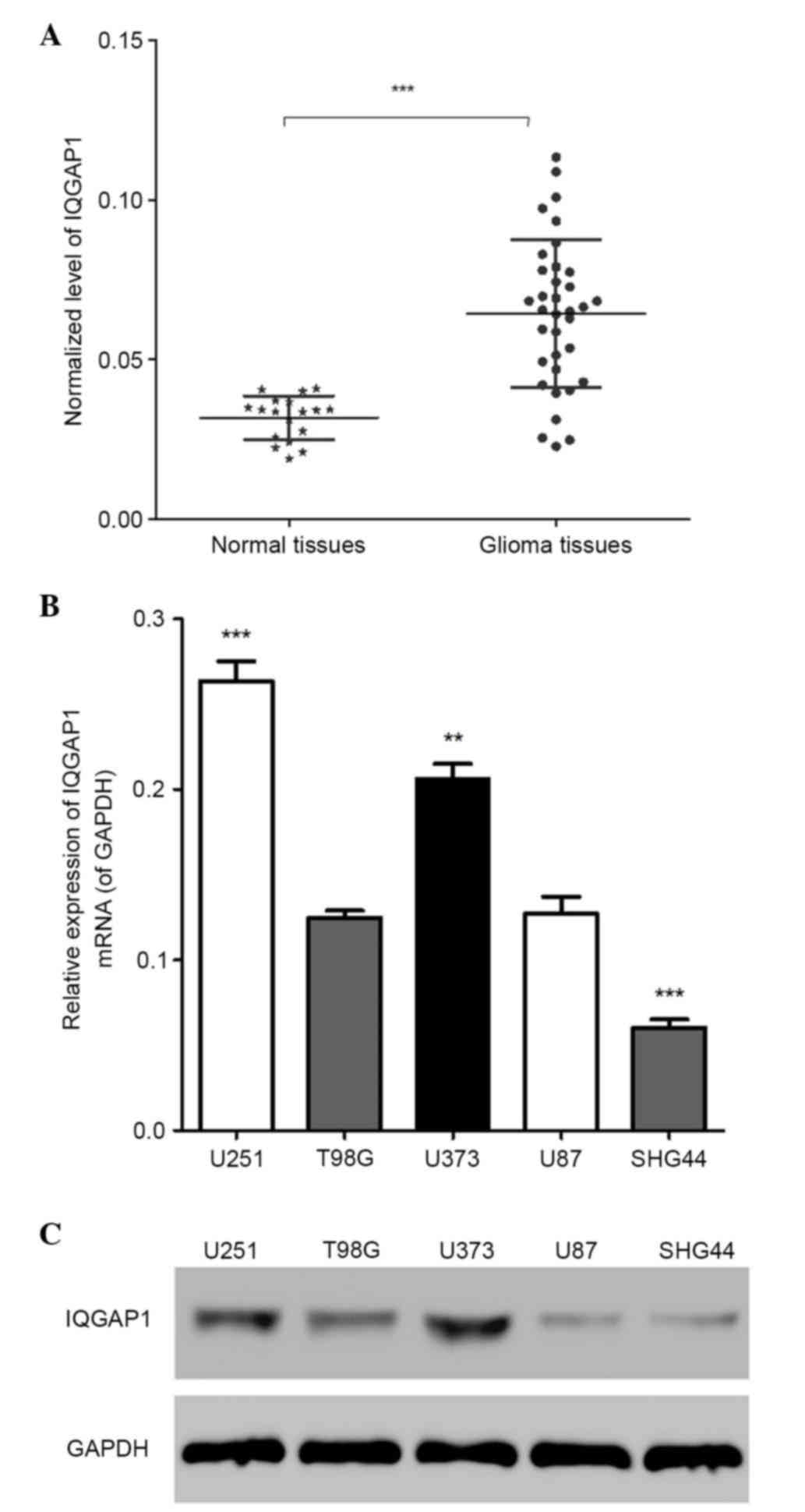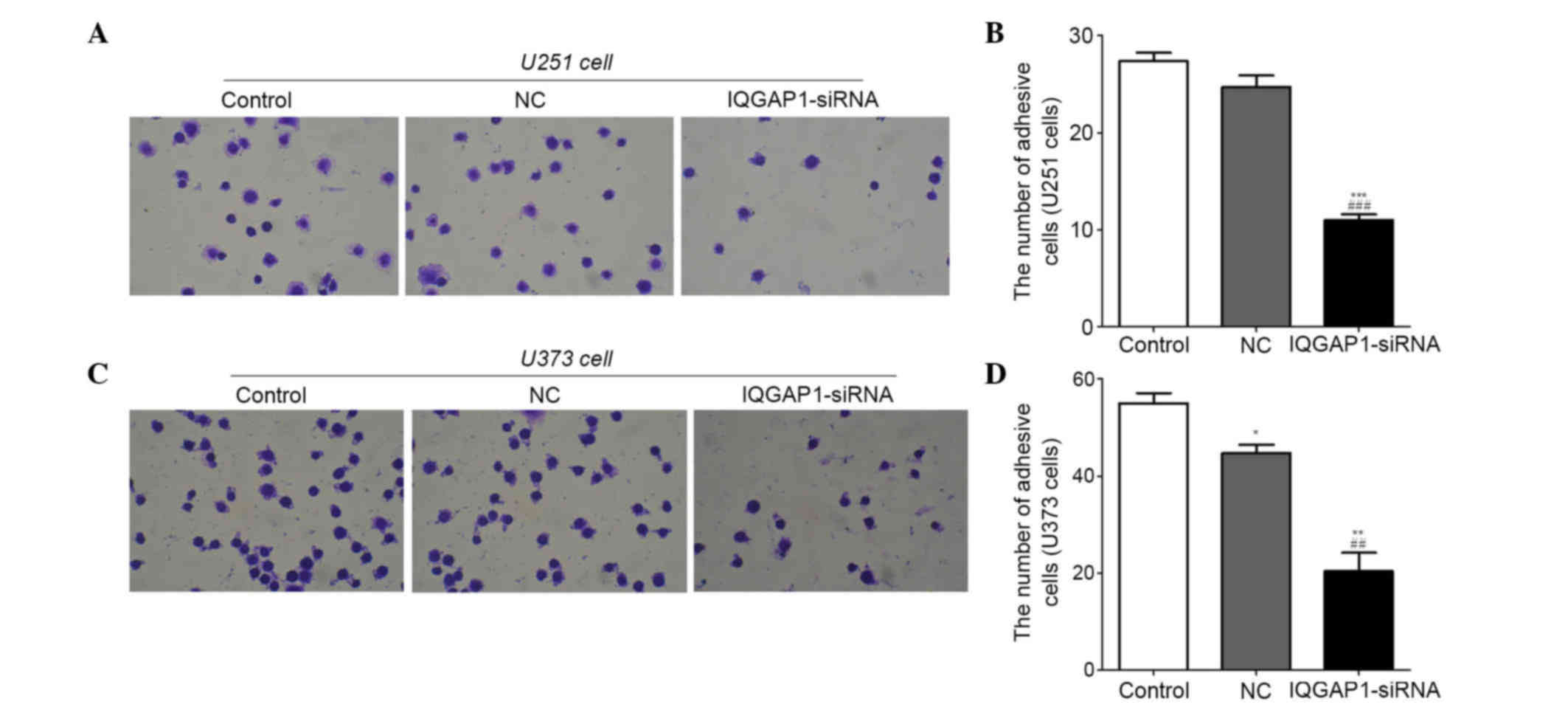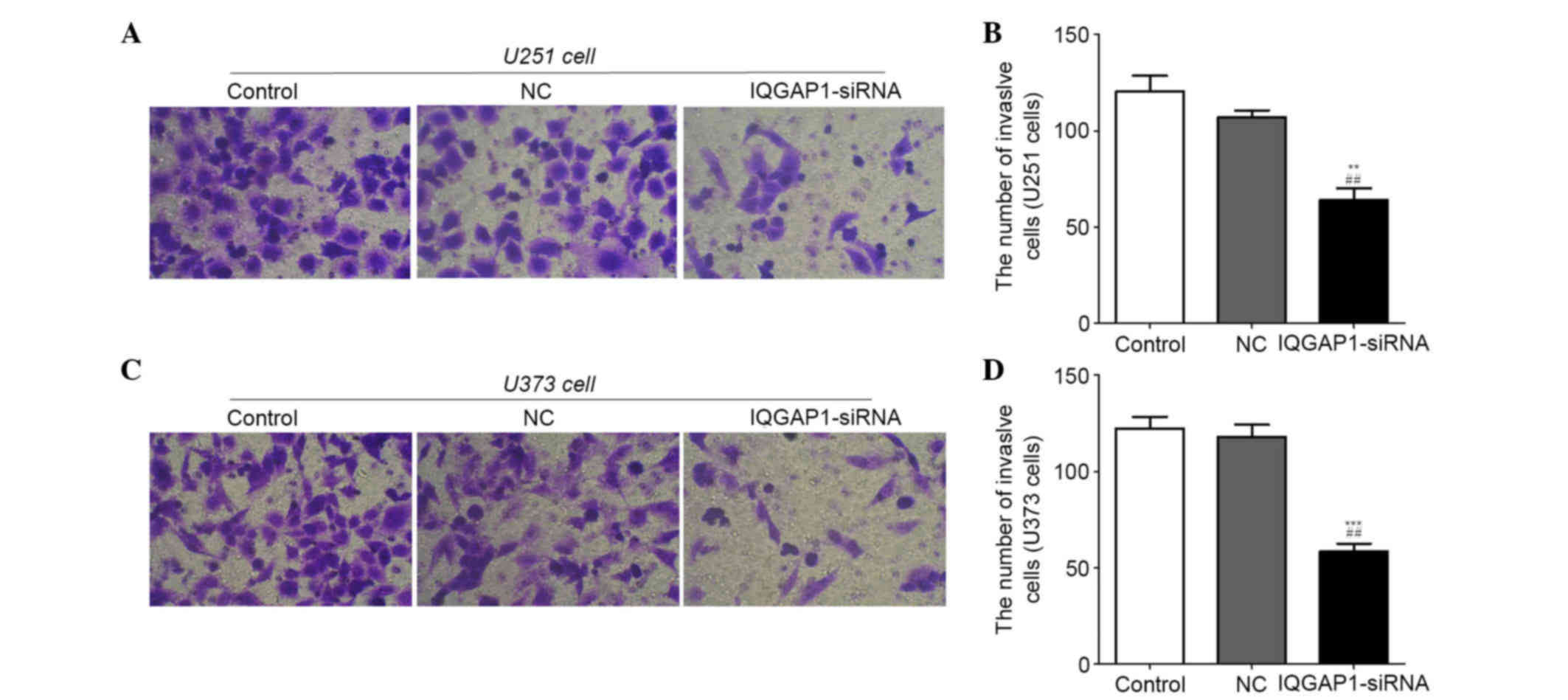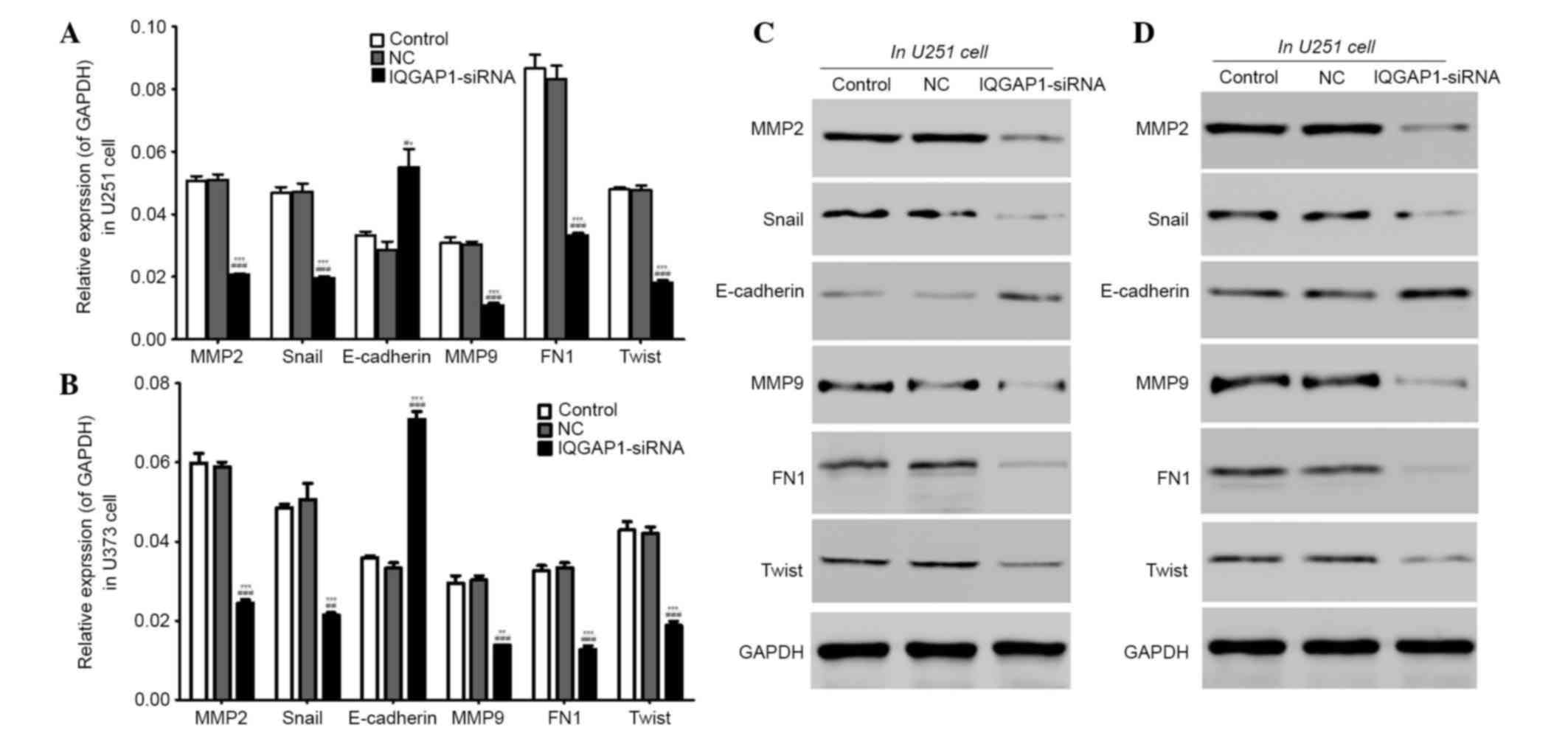|
1
|
Shirai K and Chakravarti A: Towards
personalized therapy for patients with glioblastoma. Expert Rev
Anticancer Ther. 11:1935–1944. 2011. View Article : Google Scholar : PubMed/NCBI
|
|
2
|
Vranic A: New developments in surgery of
malignant gliomas. Radiol Oncol. 45:159–165. 2011. View Article : Google Scholar : PubMed/NCBI
|
|
3
|
Ware ML, Hirose Y, Scheithauer BW, Yeh RF,
Mayo MC, Smith JS, Chang S, Cha S, Tihan T and Feuerstein BG:
Genetic aberrations in gliomatosis cerebri. Neurosurgery.
60:150–158; discussion 158. 2007. View Article : Google Scholar : PubMed/NCBI
|
|
4
|
Mawrin C: Molecular genetic alterations in
gliomatosis cerebri: What can we learn about the origin and course
of the disease? Acta Neuropathol. 110:527–536. 2005. View Article : Google Scholar : PubMed/NCBI
|
|
5
|
Patil CG, Eboli P and Hu J: Management of
multifocal and multicentric gliomas. Neurosurg Clin N Am.
23:343–350. 2012. View Article : Google Scholar : PubMed/NCBI
|
|
6
|
Weissbach L, Settlemean J, Kalady MF,
Snijders AJ, Murthy AE, Yan YX and Bernards A: Identification of a
human rasGAP-related protein containing calmodulin-binding motifs.
J Biol Chem. 269:20517–20521. 1994.PubMed/NCBI
|
|
7
|
Brown MD and Sacks DB: IQGAP1 in cellular
signaling: Bridging the GAP. Trends Cell Biol. 16:242–249. 2006.
View Article : Google Scholar : PubMed/NCBI
|
|
8
|
Jadeski L, Mataraza JM, Jeong HW, Li Z and
Sacks DB: IQGAP1 stimulates proliferation and enhances
tumorigenesis of human breast epithelial cells. J Biol Chem.
283:1008–1017. 2008. View Article : Google Scholar : PubMed/NCBI
|
|
9
|
Joyal JL, Annan RS, Ho YD, Huddleston ME,
Carr SA, Hart MJ and Sacks DB: Calmodulin modulates the interaction
between IQGAP1 and CDC42. Identification of IQGAP1 by
nanoelectrospray tandem mass spectrometry. J Biol Chem.
272:15419–15425. 1997. View Article : Google Scholar : PubMed/NCBI
|
|
10
|
Hart MJ, Callow MG, Souza B and Polakis P:
IQGAP1, a calmodulin-binding protein with a rasGAP-related domain,
is a potential effector for cdc42Hs. EMBO J. 15:2997–3005.
1996.PubMed/NCBI
|
|
11
|
Mataraza JM, Briggs MW, Li Z, Entwistle A,
Ridley AJ and Sacks DB: IQGAP1 promotes cell motility and invasion.
J Biol Chem. 278:41237–41245. 2003. View Article : Google Scholar : PubMed/NCBI
|
|
12
|
Etienne-Manneville S and Hall A: Rho
GTPases in cell biology. Nature. 420:629–635. 2002. View Article : Google Scholar : PubMed/NCBI
|
|
13
|
Li Z, Kim SH, Higgins JM, Brenner MB and
Sacks DB: IQGAP1 and calmodulin modulate E-cadherin function. J
Biol Chem. 274:37885–37892. 1999. View Article : Google Scholar : PubMed/NCBI
|
|
14
|
Kuroda S, Fukata M, Nakagawa M, Fujii K,
Nakamura T, Ookubo T, Izawa I, Nagase T, Nomura N, Tani H, et al:
Role of IQGAP1, a target of the small GTPases Cdc42 and Rac1, in
regulation of Ecadherin-mediated cell-cell adhesion. Science.
281:832–835. 1998. View Article : Google Scholar : PubMed/NCBI
|
|
15
|
White CD, Brown MD and Sacks DB: IQGAPs in
cancer: A family of scaffold proteins underlying tumorigenesis.
FEBS Lett. 583:1817–1824. 2009. View Article : Google Scholar : PubMed/NCBI
|
|
16
|
Jadeski L, Mataraza JM, Jeong HW, Li Z and
Sacks DB: IQGAP1 stimulates proliferation and enhances
tumourigenesis of human breast epithelial cells. J Biol Chem.
283:1008–1017. 2008. View Article : Google Scholar : PubMed/NCBI
|
|
17
|
Dong PX, Jia N, Xu ZJ, Liu YT, Li DJ and
Feng YJ: Silencing of IQGAP1 by shRNA inhibits the invasion of
ovarian carcinoma HO-8910PM cells in vitro. J Exp Clin Cancer Res.
27:772008. View Article : Google Scholar : PubMed/NCBI
|
|
18
|
Hu B, Shi B, Jarzynka MJ, Yiin JJ,
D'Souza-Schorey C and Cheng SY: ADP-ribosylation factor 6 regulates
glioma cell invasion through the IQ-domain GTPase-activating
protein 1-Rac1-mediated pathway. Cancer Res. 69:794–801. 2009.
View Article : Google Scholar : PubMed/NCBI
|
|
19
|
Louis DN, Ohgaki H, Wiestler OD, Cavenee
WK, Burger PC, Jouvet A, Scheithauer BW and Kleihues P: The 2007
WHO classification of tumours of the central nervoussystem. Acta
Neuropathol. 114:97–109. 2007. View Article : Google Scholar : PubMed/NCBI
|
|
20
|
Livak KJ and Schmittgen TD: Analysis of
relative gene expression data using real-time quantitative PCR and
the 2(−Delta Delta C(T)) Method. Methods. 25:402–408. 2001.
View Article : Google Scholar : PubMed/NCBI
|
|
21
|
Nakamura H, Fujita K, Nakagawa H, Kishi F,
Takeuchi A, Aute I and Kato H: Expression pattern of the scaffold
protein IQGAP1 in lung cancer. Oncol Rep. 13:427–431.
2005.PubMed/NCBI
|
|
22
|
Miyamoto S, Baba H, Kuroda S, Kaibuchi K,
Fukuda T, Maehara Y and Saito T: Changes in E-cadherin associated
with cytoplasmic molecules in well and poorly differentiated
endometrial cancer. Br J Cancer. 83:1168–1175. 2000. View Article : Google Scholar : PubMed/NCBI
|
|
23
|
Dong PX, Jian N, Xu ZJ, Liu YT, Li DJ and
Feng YJ: Silencing of IQGAP1 by shRNA inhibits the invasion of
ovarian carcinoma HO-890PM cells in vitro. J Exp Clin Cancer Res.
27:772008. View Article : Google Scholar : PubMed/NCBI
|
|
24
|
Walch A, Seidl S, Hermannstädter C, Rauser
S, Deplazes J, Langer R, von Weyhern CH, Sarbia M, Busch R, Feith
M, et al: Combined analysis of Rac1, IQGAP1, Tiam1 and E-cadherin
expression in gastric cancer. Mod Pathol. 21:544–552. 2008.
View Article : Google Scholar : PubMed/NCBI
|
|
25
|
Nabeshma K, Shmao Y, Inoue T and Koono M:
Immunohistochemical analysis of IQGAP1 expression in human
colorectal carcinomas: Its overexpression in carcinomas and
association with invasion fronts. Cancer Lett. 176:101–109. 2002.
View Article : Google Scholar : PubMed/NCBI
|
|
26
|
Schmidt VA, Chiariello CS, Capilla E,
Miller F and Bahou WF: Development of hepatocellular carcinoma in
Iqgap2-deficient mice is IQGAP1 dependent. Mol Cell Biol.
28:1489–1502. 2008. View Article : Google Scholar : PubMed/NCBI
|
|
27
|
Jadesk L, Mataraza JM, Jeong HW, Li Z and
Sacks DB: IQGAP1 stimulates proliferation and enhances
tumorigenesis of human breast epithelial cells. J Biol Chem.
283:1008–1017. 2008. View Article : Google Scholar : PubMed/NCBI
|
|
28
|
McDonald KL, O'Sullivan MG, Parkinson JF,
Shaw JM, Payne CA, Brewer JM, Young L, Reader DJ, Wheeler HT, Cook
RJ, et al: IQGAP1 and IGFBP2: Valuable biomarkers for determining
prognosis in glioma patients. J Neuropathol Exp Neruol. 66:405–417.
2007. View Article : Google Scholar
|
|
29
|
Ussar S and Voss T: MEK1 and MEK2,
different regulators of the G1/S transition. J Biol Chem.
279:43861–43869. 2004. View Article : Google Scholar : PubMed/NCBI
|
|
30
|
Yamaoka-Tojo M, Ushio-Fukai M, Hilenski L,
Dikalov SI, Chen YE, Tojo T, Fukai T, Fujimoto M, Patrushev NA,
Wang N, et al: IQGAP1, a novel vascular endothelial growth factor
receptor binding protein, is involved in reactive oxygen
species-dependent endothelial migration and proliferation. Circ
Res. 95:276–283. 2004. View Article : Google Scholar : PubMed/NCBI
|
|
31
|
Owen D, Campbell LJ, Littlefield K, Evetts
KA, Li Z, Sacks DB, Lowe PN and Mott HR: The IQGAP1-Rac1 and
IQGAP1-Cdc42 interactions: Interfaces differ between the complexes.
J Biol Chem. 283:1692–1704. 2008. View Article : Google Scholar : PubMed/NCBI
|
|
32
|
Hayashi H, Nabeshima K, Aoki M, Hamasaki
M, Enatsu S, Yamauchi Y, Yamashita Y and Iwasaki H: Overexpression
of IQGAP1 in advanced colorectal cancer correlates with poor
prognosis-critical role in tumor invasion. Int J Cancer.
126:2563–2574. 2010.PubMed/NCBI
|
|
33
|
Dong P, Nabeshima K, Nishimura N, Kawakami
T, Hachisuga T, Kawarabayashi T and Iwasaki H: Overexpression and
diffuse expression pattern of IQGAP1 at invasion fronts are
independent prognostic parameters in ovarian carcinomas. Cancer
Lett. 243:120–127. 2006. View Article : Google Scholar : PubMed/NCBI
|
|
34
|
Mitra A, Chakrabarti J, Chattopadhyay N
and Chatterjee A: Membrane-associated MMP-2 in human cervical
cancer. J Environ Pathol Toxicol Oncol. 22:93–100. 2003.PubMed/NCBI
|
|
35
|
Moroz A, Delella FK, Almeida R, Lacorte
LM, Fávaro WJ, Deffune E and Felisbino SL: Finasteride inhibits
human prostate cancer cell invasion through MMP2 and MMP9
downregulation. PLoS One. 8:e847572013. View Article : Google Scholar : PubMed/NCBI
|
|
36
|
Ansieau S, Courtois-Cox S, Morel AP and
Puisieux A: Failsafe program escape and EMT: A deleterious
partnership. Semin Cancer Biol. 21:392–396. 2011.PubMed/NCBI
|
|
37
|
Julien S, Puig I, Caretti E, Bonaventure
J, Nelles L, van Roy F, Dargemont C, De Herreros AG, Bellacosa A
and Larue L: Activation of NF-kappaB by Akt upregulates Snail
expression and induces epithelium mesenchyme transition. Oncogene.
26:7445–7456. 2007. View Article : Google Scholar : PubMed/NCBI
|
|
38
|
Tiwari N, Gheldof A, Tatari M and
Christofori G: EMT as the ultimate survival mechanism of cancer
cells. Semin Cancer Biol. 22:194–207. 2012. View Article : Google Scholar : PubMed/NCBI
|
|
39
|
Yilmaz M and Christofori G: EMT, the
cytoskeleton, and cancer cell invasion. Cancer Metastasis Rev.
28:15–33. 2009. View Article : Google Scholar : PubMed/NCBI
|
|
40
|
Peña C, García JM, Larriba MJ, Barderas R,
Gómez I, Herrera M, García V, Silva J, Domínguez G, Rodríguez R, et
al: SNAI1 expression in colon cancer related with CDH1 and VDR
downregulation in normal adjacent tissue. Oncogene. 28:4375–4385.
2009. View Article : Google Scholar : PubMed/NCBI
|
|
41
|
Kyo S, Sakaguchi J, Ohno S, Mizumoto Y,
Maida Y, Hashimoto M, Nakamura M, Takakura M, Nakajima M, Masutomi
K and Inoue M: High twist expression is involved in infiltrative
endometrial cancer and affects patient survival. Hum Pathol.
37:431–438. 2006. View Article : Google Scholar : PubMed/NCBI
|
|
42
|
Ifon ET, Pang AL, Jonhnson W, Cashman K,
Zimmerman S, Muralidhar S, Chan WY, Casey J and Rosenthal LJ: U94
alters FN1 and ANGPTL4 gene expression and inhibits tumorigenesis
of prostate cancer cell line PC3. Cancer Cell Int. 5:192005.
View Article : Google Scholar : PubMed/NCBI
|
















